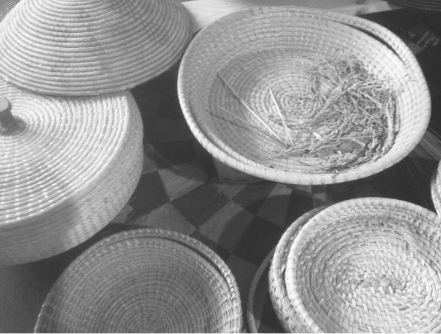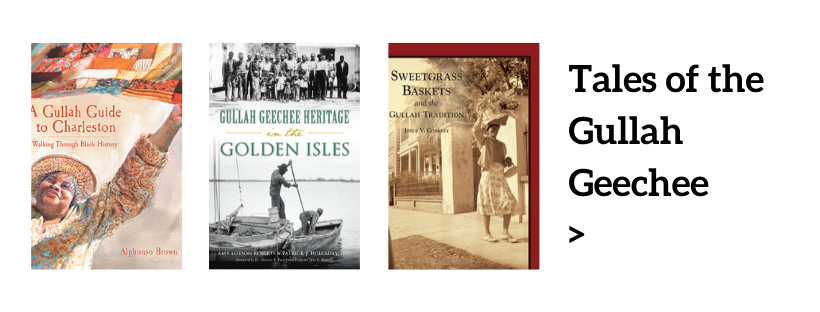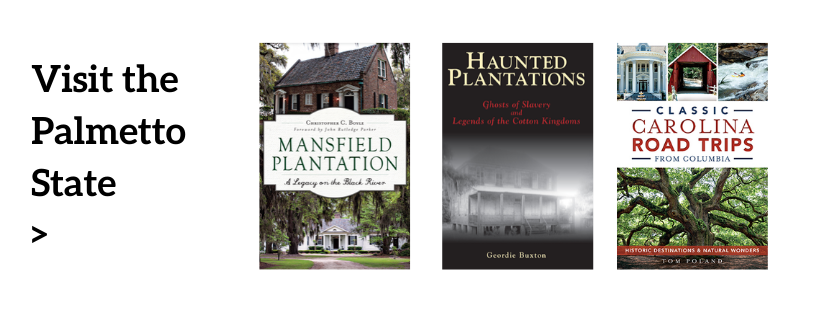
If you were tricked into slavery, how would you react? A famous legend in Georgia’s Golden Isles tells of a group of free West Africans who willingly came to America for work, upon realizing they would be enslaved, took their own lives, deliberately drowning themselves in Dunbar Creek on St. Stephen’s Island. Singing a tribal hymn, the men chose to live free or die.
The water brought us here, the water will take us away.
– Ancient Ibo saying
Why is Gullah Geechee, the English-based language and culture developed by the enslaved South Carolina and Georgia community, still such a mystery? While African-Americans lived on the South Carolina and Georgia Sea Island coasts before and after the Civil War, it was the relative isolation of these communities that allowed their African culture and traditions to thrive, while remaining unknown. During the slave trade, their African ancestors brought with them their own innovations in science, construction, agriculture, animal farming, and oral history from over ten thousand years of tradition. As the modern world reached what was derogatorily known as the Lowcountry, Gullah Geechee was dismissed outright. In the early 20th century, black communities grew in political and economic strength, but that sound of the local Southern, rural, blacks slowly diminished after the 1920s. It is the landmarks of the African-Americans in and around Charleston, South Carolina and the barrier islands of Georgia that are the most durable monument to their Gullah Geechee legacy.

The word “Gullah” is considered a derivation of the African word Gora or Gola, which were names of tribes living in Sierra Leone, West Africa. The name “Geechee” may come from an African tribe living on the border between Guinea and Liberia who were known as Kissi, pronounced Geezee.


The Harrington School
Following emancipation, the Harrington area was settled by former slaves on St. Simons Island, Georgia. Due to the nature of racial segregation, it grew into its own self-enclosed community, and boasted a store, gas station, barbershop, two churches, and a restaurant called the Plantation Supper Club. The Harrington Graded School was built in 1924 and served as the main schoolhouse for three African American communities on St. Simons Island. The Historic Harrington School hosted grades one through seven until desegregation in the 1960s; and in 1968, it was converted to a daycare center for a few years. It was largely abandoned after that and sat unused for decades. In 2004, the St. Simons African American Heritage Coalition worked to save the landmark. Rescued and restored, it officially reopened in 2017.
Dixville
From 1875 to 1967, the Dixville neighborhood on the south side of Brunswick, Georgia was home to nearly 600,000. Its African-American residents lived in a planned residential community, and with its shipyards and factories, Dixville boomed during World War II. Dixville remained insular, but provided for all of its citizens needs from black-owned businesses. In 2017, Dixville was added to the Georgia Register of Historic Places.

Gates of Charleston
Sometimes, an entire culture’s legacy can be found in the smallest artifacts. Charleston, South Carolina is adorned with the work of African-American Philip Simmons, who designed and forged iron gates for homes and churches with his signature tightly curled on the ends. His artistry was legendary, as was his pride — Simmons said that the snake on one of his gates looked so real that the lady of the house was afraid to come through it. Through is talent, Philip Simmons became an internationally known blacksmith/ornamental iron gatemaker, and had over five hundred documented gates and ironworks on homes and in museums throughout the United States.


